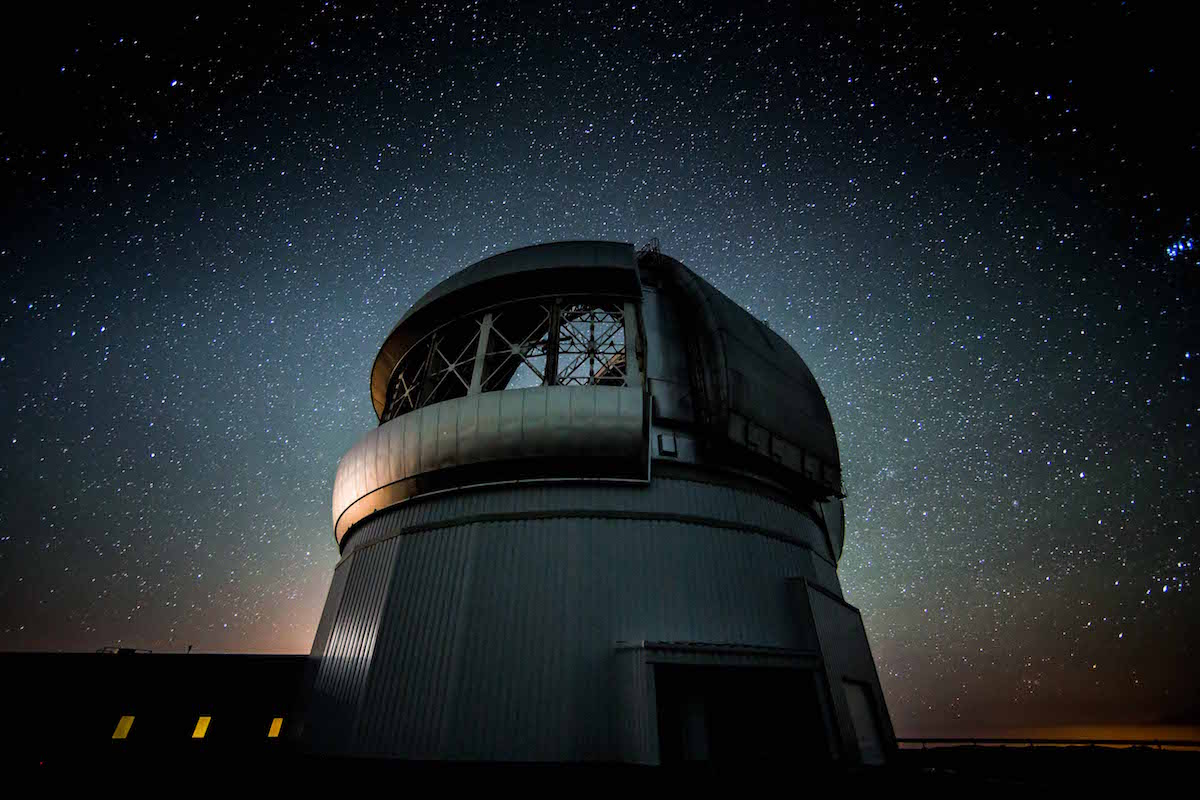If you want to watch the stars, there’s no better place on Earth to do so than the massive Gemini Observatory telescopes located in Chile and Hawaii. The two optical telescopes are among the largest in the world, each measuring more than 26 feet in diameter, and collectively, the system can access nearly the entire Northern and Southern range of the sky.
This month, the Gemini Observatory announced it is inviting College of Marin physics and astronomy professor Antonino “Nino” Cucchiara, Ph.D., to perform research with his team at the Chilean observatory.
Both Gemini telescopes employ a range of technologies to provide world-class optical and high-quality infrared observations, and Cucchiara’s team plan to use the two telescopes to study other galaxies in an effort to better understand the beginning of the universe.
Given that a night on each Gemini telescope is worth tens of thousands of U.S. dollars, several panels of scientists study hundreds of different research proposals with strict scientific evaluations in order to choose the top submission, which is then invited to use the telescopes to conduct research.
For this research proposal, Dr. Cucchiara teamed with a set of collaborators from around the world including his post-doc researcher, Dr. Robert Strausbaugh, from the University of the Virgin Islands.
Dr. Cucchiara’s main astronomical interest is the study of the early stages of the universe using the most powerful explosions known to humankind, Gamma-ray Bursts (GRBs). He and his team will have access to both Gemini-North (in Hawaii) and Gemini-South (in Chile) to conduct research for their proposal, entitled “High-Redshift Gamma-Ray Bursts as Probes of Cosmic Dawn.”
For the layman, the research project will focus the telescope’s modern technology on gamma-ray bursts from the most distant galaxies in the night sky in order to better understand how the universe first formed chemically.
“One of the most exciting things is we will be able to study the very first stars born at the beginning of the universe and hopefully learn how chemical elements formed in combination with the evolution of the most powerful explosions occurring in space called gamma-ray bursts,” Dr. Cucchiara says in a statement. “They hide the true secrets of stellar evolution and the story of the first moments in which matter combined to form stars.”
For this project, Cucchiara and his team will be able to unlock those stellar secrets with the main Gemini telescope and its instruments in Chile, which uses a sophisticated digital camera to accurately measure the intensity of light from very faint objects in the sky. The team will also employ a spectrograph, which uses near-infrared technology to measure the chemical makeup of gas in and around these distant gamma-ray bursts.
Once the research is complete, Dr. Cucchiara plans to bring the data back to his classes and give students the opportunity to learn basic and versatile skills in astronomy and physics while gaining a better understanding of the science behind the research and its importance.
This is not Dr. Cucchiara’s first foray with the Gemini Observatory, and he recently joined another collective of researchers to coauthor a news release, “Gemini Observatory’s Quick Reflexes Capture Fleeting Flash,” that will be presented in a paper to appear in Astrophysical Journal Letters.
While in-person student services are still on hold at the College of Marin due to Covid-19 restrictions, Dr. Cucchiara encourages students to connect with the College’s learning communities, which have remained active through video conferencing during remote instruction.












